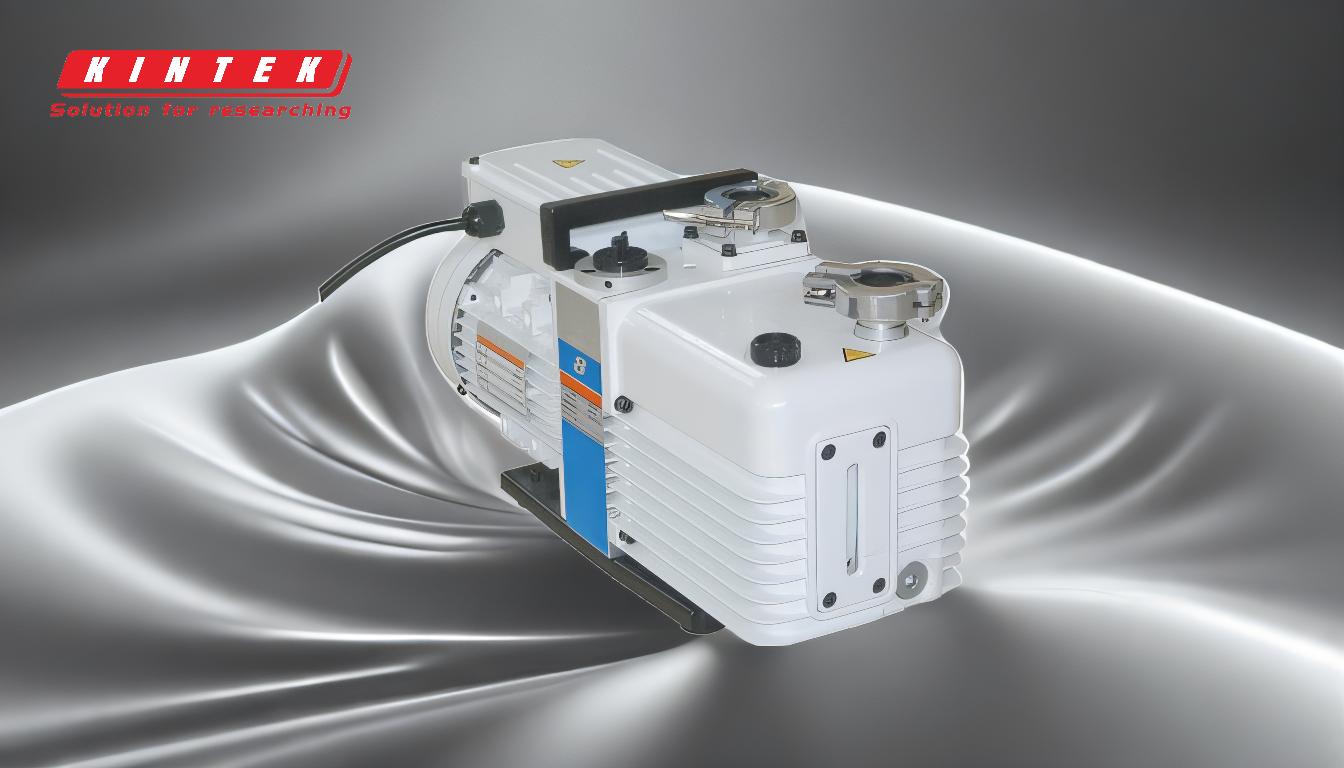A two-stage rotary vane vacuum pump operates by using two sets of vanes and chambers to achieve a higher vacuum level compared to a single-stage pump. The pump works by trapping gas molecules in chambers created by rotating vanes, compressing and expelling them to create a vacuum. The two-stage design allows for more efficient gas removal by sequentially compressing the gas in two chambers, which reduces the pressure further in the second stage. This design is ideal for applications requiring medium to high vacuum levels, such as in laboratories or industrial processes.
Key Points Explained:

-
Basic Mechanism of a Rotary Vane Vacuum Pump:
- A rotary vane vacuum pump consists of a rotor with vanes inserted radially into it. The rotor is eccentrically mounted inside a stator housing.
- As the rotor rotates, the vanes slide in and out due to centrifugal force, creating chambers of varying sizes.
- These chambers trap gas molecules, compress them, and then expel them, creating a vacuum.
-
Single-Stage vs. Two-Stage Design:
- In a single-stage pump, gas is compressed and expelled in one chamber, achieving a moderate vacuum level.
- A two-stage pump has two sets of vanes and chambers. The gas is first compressed in the first stage and then further compressed in the second stage, achieving a deeper vacuum.
-
Role of Oil in the Pump:
- Oil is used in rotary vane pumps to lubricate the moving parts and create a tight seal between the vanes and the housing.
- The oil also helps in cooling the pump and removing contaminants from the gas being evacuated.
-
Operation of a Two-Stage Rotary Vane Pump:
- First Stage: The gas is drawn into the first chamber, where it is compressed by the rotating vanes.
- Second Stage: The partially compressed gas is then transferred to the second chamber, where it undergoes further compression.
- The two-stage process allows the pump to achieve a lower pressure (higher vacuum) than a single-stage pump.
-
Applications of Two-Stage Rotary Vane Pumps:
- These pumps are commonly used in laboratories for medium to high vacuum applications, such as in chemistry and biology experiments.
- They are also used in industrial processes where a reliable and consistent vacuum is required, such as in vacuum drying, degassing, and packaging.
-
Advantages of Two-Stage Design:
- Higher Vacuum Levels: The two-stage design allows for a deeper vacuum compared to single-stage pumps.
- Efficiency: The sequential compression in two stages makes the pump more efficient in removing gas molecules.
- Reliability: The use of oil for lubrication and sealing enhances the durability and reliability of the pump.
-
Maintenance Considerations:
- Regular oil changes are necessary to maintain the pump's performance and prevent contamination.
- The vanes and seals should be inspected periodically for wear and tear, as they are critical to the pump's operation.
By understanding these key points, a purchaser can make an informed decision about whether a two-stage rotary vane vacuum pump is suitable for their specific application, considering factors such as vacuum level requirements, efficiency, and maintenance needs.
Summary Table:
| Aspect | Details |
|---|---|
| Mechanism | Uses two sets of vanes and chambers for sequential gas compression. |
| Single-Stage vs. Two-Stage | Two-stage pumps achieve deeper vacuum levels compared to single-stage pumps. |
| Role of Oil | Lubricates, seals, cools, and removes contaminants. |
| Operation | Gas is compressed in two stages for higher efficiency and lower pressure. |
| Applications | Labs (chemistry, biology) and industrial processes (drying, degassing). |
| Advantages | Higher vacuum levels, improved efficiency, and enhanced reliability. |
| Maintenance | Regular oil changes and periodic inspection of vanes and seals required. |
Need a reliable two-stage rotary vane vacuum pump for your lab or industry? Contact us today to find the perfect solution!




